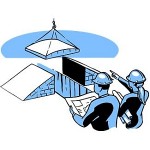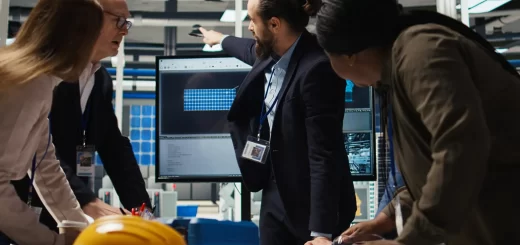Project Control in 5 Steps
 Project control is a series of processes and steps that a project manager in cooperation with other management staff carries out to control the project in terms of progress, quality, changes, products, commitments and other critical concerns. The ultimate purpose of project control is to manage work during each stage of the implementation lifecycle and to prepare the project for the next stage. In this article you will find out how to control a project in 5 steps.
Project control is a series of processes and steps that a project manager in cooperation with other management staff carries out to control the project in terms of progress, quality, changes, products, commitments and other critical concerns. The ultimate purpose of project control is to manage work during each stage of the implementation lifecycle and to prepare the project for the next stage. In this article you will find out how to control a project in 5 steps.
Project control is a project management function intended for achieving defined objectives and expectations within a predetermined timetable. Traditionally it involves these three high-level processes that the management team needs to carry out throughout their project:
- Setting standards
- Measuring performance
- Taking corrections
Each of the processes can be divided into smaller steps and tasks. In this article I’m going to break down the processes into these 5 steps:
- Hold meetings
- Perform quality control
- Track work progress
- Respond to changes
- Manage issues
Let’s review each of the project control steps in detail.
Hold Meetings
The objective of conducting meetings during the course of a project is to assemble and manage an effective project team that is able to accomplish defined goals and objectives. At a meeting the project manager should provide an overview of work at the moment, describe current goals and issues, and establish effective communications with the team.
Every meeting starts with an agenda. The project manager needs to write a meeting agenda and then share this document with all participants of the meeting. As an example, here’s the template of project kick-off agenda (doc file, 52Kb).
Conducting a meeting enables a project manager to accomplish these tasks important to the control process:
- Review and (re)assign roles and responsibilities of the team
- Provide executive direction of the project to the team
- Notify of current status of project work, including open issues
- Provide guidance to the team
- Make executable decisions regarding further actions throughout the project
- Establish and review success criteria
Perform Quality Control
By controlling project quality it is possible to confirm that the product is complete and developed in line with expectations. Quality control involves business and technical staff in a range of activities such as defining technical standards, setting business expectations, establishing product requirements, others.
Quality control starts when a project is initiated and lasts throughout the entire project lifecycle until the product is developed and handed over to the customer. It aims to ensure that activities and tasks at any given stage of the lifecycle can be signed off so that the project can continue developing.
Here’s a list of the key tasks a project manager needs to perform to control quality:
- Create a quality review schedule that defines timing for controlling a given stage
- Develop an agenda that determines key tasks of people involved in the control process
- Assign reviewers who will perform stage quality control, including stage objectives, products, commitments, roles, responsibilities etc.
- Allocate other roles such as Facilitator (who ensures adherence to the agenda and appropriate follow-up) and Author (who provides all necessary information and takes approved corrective actions after the control process finishes)
- Document and record all actions and decisions taken throughout the control process
- Ensure that appropriate follow-up actions are taken
- Notify stakeholders of project status after the control process is done
Track Work Progress
This step in controlling a project refers to monitoring, measuring and controlling progress on the project. The purpose is to ensure that project work is being done as scheduled. The project manager needs to track work progress at any given stage to make sure the project goes towards right direction. Please read this article about reviewing project state to learn more.
Here’re the key steps a project manager should take to track progress and ensure effective project control:
- Capture task performance data including actual start/finish date for tasks, planned/actual work effort (in hours), latest estimated duration (in hours) to complete the tasks, others
- Update the schedule with the actual task performance data
- Estimate remaining costs and update the cost estimates with actual costs incurred during a selected period
- Capture any non-staff costs incurred
- Consider re-planning work for a given stage in terms of the updates made to the schedule and cost estimates
- Adjust staff availability and consider making re-assignments
- Involve additional resources if needed
- Measure team performance and determine issues that cause lower performance
- Provide motivation to personnel during team status meetings
- Take corrective actions to eliminate performance issues
Respond to Changes
The goal of controlling changes is to define and implement the addition of work into a given stage. By effectively responding to changes the project manager is able to ensure that the scope, schedule and cost remain relevant to current situation.
Here’s a general to-do list a project manager needs to complete when requesting and responding to changes:
- Receive and review change requests which provide a description of the proposed change with priority
- Assign change requests to competent team members who must investigate alternative solutions
- Review and approve/cancel alternative solutions and then update change requests accordingly
- Approve updated change requests
- Create an action plan for implementing the changes
- Define implementation time for each change
- Monitor progress and quality on the changes
- Enables the changes to completed products
Manage Issues
As a process, issue management aims to resolve any issues affecting the success of a project. This process takes a range of steps which are to identify issues, asses their impact, develop resolution actions, take those actions and track progress on issues.
A project manager needs to manage issues in order to ensure that the project is carried out as planned. Here’re broad tasks the manager can do to manage issues:
- Identify and record issues affecting the project
- Create an issue log that specifies the issues including their description, type, priority, assigned personnel, status, etc.
- Assess impact of the issues on the scope, schedule and cost
- Determine how the issues might be resolved
- Review, correct and accept recommendations regarding managing the issues
- Execute the resolution
- Monitor progress on issues
Along with the five listed steps in project control, there are other activities such as risk management, exception management, communications management. Project control is a complex and comprehensive process, and thus project managers should realize all the steps of this process. In my future articles I will describe the rest steps and activities of project control. Thank you for your time and good luck with your project initiatives!














